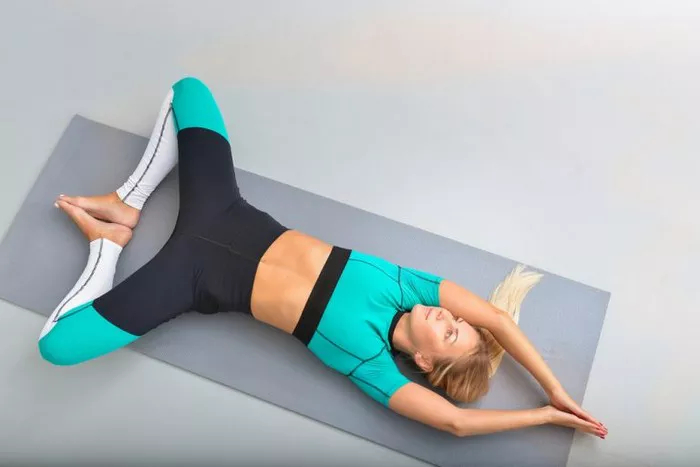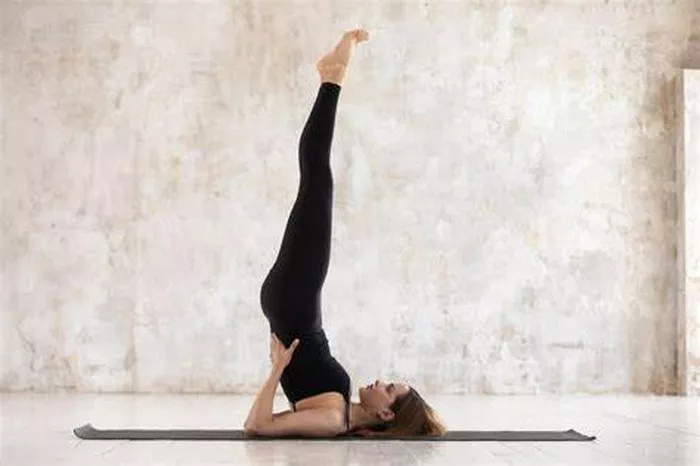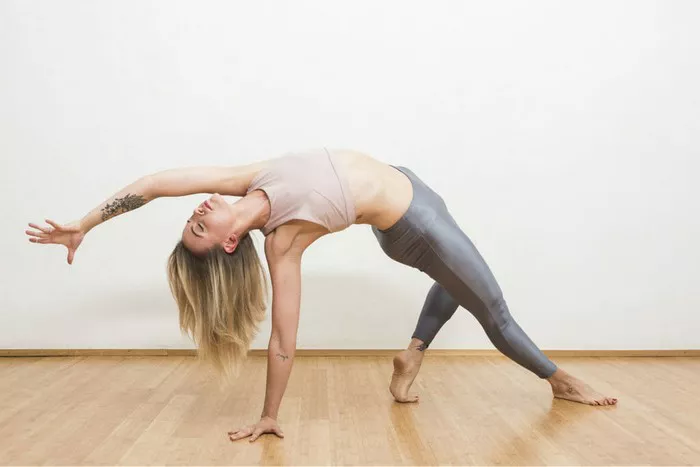Standing balance yoga poses are crucial for developing stability and strength in your practice. These poses engage multiple muscle groups, particularly in your legs and core. They help improve your overall balance, which is essential for everyday activities and athletic performance. When you practice these poses, you learn to connect with your body and focus your mind. This connection can lead to a greater sense of awareness and control. Many people find that improving their balance also boosts their confidence. This confidence can extend beyond the yoga mat into daily life.
Practicing standing balance poses regularly can lead to significant benefits. First, they enhance physical strength and coordination. As you hold each pose, your muscles work to stabilize your body. This process helps to tone your legs, strengthen your core, and improve your posture. Additionally, these poses challenge your mental focus. Balancing requires concentration, which can help clear your mind and reduce stress. The combination of physical and mental training makes standing balance poses a powerful tool in your yoga practice. In this article, we will explore various standing balance poses, their proper techniques, and the benefits they offer.
Key Standing Balance Yoga Poses
1. Tree Pose (Vrksasana)
Tree Pose is one of the most well-known standing balance poses. It encourages focus and improves stability. To enter Tree Pose, stand tall with your feet together. Shift your weight to your left foot. Bend your right knee and place your right foot on your inner left thigh or calf (avoid the knee). Bring your hands to your heart in a prayer position. As you breathe deeply, find a focal point in front of you to help maintain your balance. Hold the pose for several breaths, then switch sides.
The benefits of Tree Pose are numerous. It strengthens the legs, particularly the calves and thighs. It also stretches the groin and inner thighs. Mentally, this pose cultivates focus and concentration. Practicing Tree Pose regularly can help you become more grounded in your daily life.
2. Warrior III (Virabhadrasana III)
Warrior III is a powerful pose that builds strength and balance. To enter Warrior III, start in a standing position. Step forward with your right foot and shift your weight onto it. Lift your left leg behind you while leaning your torso forward. Extend your arms forward, creating a straight line from your fingertips to your lifted foot. Keep your hips level and your core engaged. Hold for several breaths, then switch sides.
This pose enhances overall body strength. It particularly targets the hamstrings, glutes, and core. Warrior III also improves focus and concentration. As you hold the pose, you develop a sense of stability and control. With regular practice, you may notice increased body awareness and confidence.
3. Half Moon Pose (Ardha Chandrasana)
Half Moon Pose is a delightful balance pose that opens the hips and stretches the sides of your body. To practice Half Moon Pose, begin in a standing position. Step your right foot back and bend your left knee into a lunge. Place your left hand on the floor or a block next to your left foot. Slowly lift your right leg parallel to the ground while extending your right arm upward. Keep your gaze on your right hand. Hold the pose for several breaths, then switch sides.
The benefits of Half Moon Pose include improved balance and flexibility. It strengthens the legs, particularly the standing leg. This pose also enhances coordination and body awareness. With practice, you may find it easier to shift your weight and maintain balance.
4. Eagle Pose (Garudasana)
Eagle Pose is a unique standing balance pose that stretches the shoulders and legs. To enter Eagle Pose, stand tall and bend your knees slightly. Cross your right thigh over your left. Tuck your right foot behind your left calf if possible. Cross your left arm over your right, bending at the elbows and bringing your palms together. Hold the pose for several breaths, then switch sides.
Eagle Pose improves balance and concentration. It strengthens the legs and stretches the back and shoulders. The pose encourages a sense of focus and clarity. Regular practice can help you become more centered and grounded.
5. Dancer’s Pose (Natarajasana)
Dancer’s Pose is a beautiful balance pose that opens the heart and stretches the front of the body. To practice Dancer’s Pose, stand tall and shift your weight onto your left foot. Bend your right knee and reach back to grab your right ankle with your right hand. As you lift your right foot, extend your left arm forward. Keep your chest lifted and your gaze forward. Hold the pose for several breaths, then switch sides.
The benefits of Dancer’s Pose include improved balance and flexibility. It strengthens the legs, opens the hips, and stretches the chest and shoulders. This pose also enhances focus and concentration. With consistent practice, you can develop greater body awareness and confidence in your movements.
6. Warrior II (Virabhadrasana II)
Warrior II is a foundational pose that enhances strength and stability. To enter Warrior II, start in a standing position. Step your left foot back, turning it out to a 90-degree angle. Bend your right knee, ensuring it is directly above your right ankle. Extend your arms parallel to the floor, gazing over your right fingertips. Hold the pose for several breaths, then switch sides.
Warrior II builds strength in the legs and core. It opens the hips and chest while improving balance. This pose also encourages a sense of determination and focus. Practicing Warrior II regularly can enhance your overall stability and confidence.
7. Side Angle Pose (Utthita Parsvakonasana)
Side Angle Pose is an excellent way to stretch the sides of your body while building strength. To practice Side Angle Pose, begin in Warrior II. Lower your right elbow to your right knee, resting it lightly. Extend your left arm over your head, creating a straight line from your left foot to your fingertips. Keep your gaze upward or toward the floor. Hold for several breaths, then switch sides.
The benefits of Side Angle Pose include improved flexibility and strength. It stretches the hips, groin, and sides while toning the legs. This pose encourages focus and balance. Regular practice can help you develop a deeper understanding of your body’s alignment.
8. Crescent Lunge (Anjaneyasana)
Crescent Lunge is a dynamic pose that builds strength and balance. To practice Crescent Lunge, begin in a standing position. Step your right foot back, keeping your left knee bent. Lower your right knee toward the ground, keeping your torso upright. Raise your arms overhead, reaching your fingertips toward the sky. Hold the pose for several breaths, then switch sides.
Crescent Lunge strengthens the legs and core while opening the hips. It also enhances balance and stability. Practicing this pose can improve your body awareness and alignment.
9. Standing Forward Bend (Uttanasana)
Standing Forward Bend may seem like a simple pose, but it offers many benefits. To enter Standing Forward Bend, stand tall with your feet together. Inhale and lengthen your spine. As you exhale, hinge at your hips and fold forward, bringing your hands to the floor or your shins. Hold for several breaths, allowing your head to hang heavy.
This pose stretches the hamstrings, calves, and back while calming the mind. It encourages relaxation and release of tension. Regular practice can improve your flexibility and body awareness.
10. Chair Pose (Utkatasana)
Chair Pose is a challenging standing balance pose that strengthens the legs and core. To practice Chair Pose, stand tall with your feet together. Inhale and raise your arms overhead. As you exhale, bend your knees and lower your hips as if sitting in an imaginary chair. Keep your chest lifted and your knees aligned with your feet. Hold for several breaths.
The benefits of Chair Pose include improved strength and stability. It tones the legs, glutes, and core while enhancing balance. Regular practice can help you develop greater confidence in your physical abilities.
See also: What Are the Benefits of Iyengar Yoga Restorative Asanas?
Tips for Practicing Standing Balance Poses
Start with Foundation: Ensure your feet are grounded. Feel the connection with the earth as you shift your weight.
Focus on a Point: Choose a drishti (focal point) to help maintain your balance. This could be a spot on the wall or the floor.
Engage Your Core: A strong core is essential for stability. Keep your abdominal muscles engaged throughout each pose.
Breathe Deeply: Use your breath to find steadiness. Inhale deeply and exhale slowly to help calm your mind.
Be Patient: Balance improves with practice. Don’t be discouraged if you wobble or fall. Each attempt builds strength and confidence.
Use Props: If you struggle with balance, consider using a wall or a chair for support. Blocks can also help if you need assistance reaching the floor.
Conclusion
Standing balance poses are an integral part of a well-rounded yoga practice. They offer numerous physical and mental benefits. By incorporating these poses into your routine, you can improve your strength, stability, and focus. Remember to practice with patience and mindfulness. Over time, you will notice the positive effects of these poses on your overall well-being. Enjoy your journey toward better balance.
You Might Be Interested In
























